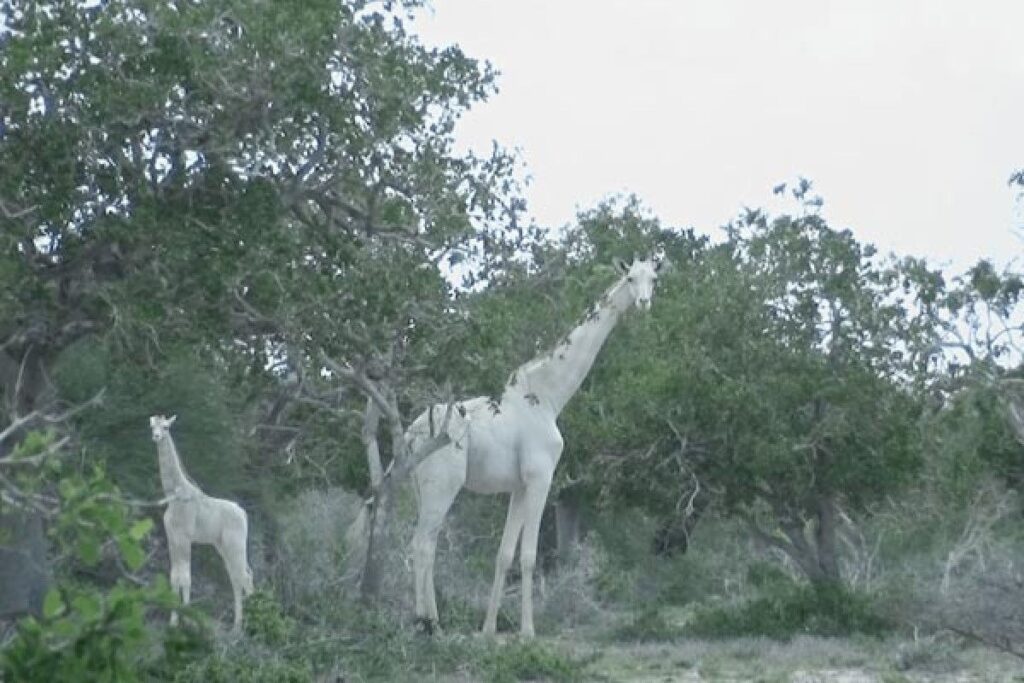
In the vast expanses of Kenya’s arid savannah near the Somalia border, a lone figure roams, standing out conspicuously against the natural landscape. This solitary being is not just any giraffe but the world’s last known white giraffe. With its distinctive white coloration caused by a rare genetic trait called leucism, this majestic creature has become the focus of conservation efforts aimed at preserving its unique existence.

The story takes a somber turn, as the white giraffe now stands alone, mourning the loss of a female companion and her calf, both victims of poaching in March, as reported by the Ishaqbini Hirola Community Conservancy. The urgency to safeguard this remarkable creature has led to a collaborative initiative involving the Kenya Wildlife Service, the Northern Rangelands Trust, and Save Giraffes Now.
In a bid to fortify the protection measures for the lone white giraffe, a significant step has been taken – the fitting of a GPS tracking device. This cutting-edge technology is attached to one of the giraffe’s horns, serving as a beacon of hope and a deterrent against potential poachers. The device is programmed to transmit its location every hour, enabling wildlife rangers to closely monitor the giraffe’s movements and respond promptly to any potential threats.

The implementation of the GPS tracking device marks a pivotal moment in the ongoing efforts to safeguard this rare and vulnerable creature. The conservancy, in a statement, expressed gratitude to the collaborative efforts of the Kenya Wildlife Service, the Northern Rangelands Trust, and Save Giraffes Now for their instrumental role in this initiative.
While the white giraffe remains nameless, its significance extends far beyond the absence of a label. It represents a unique thread in the intricate tapestry of biodiversity, a living testament to the wonders of the natural world. The leucistic trait that graces this giraffe, though visually striking, has inadvertently made it a target for poachers seeking to exploit its rarity.

The deployment of the GPS tracking device symbolizes a commitment to ensuring the survival of this exceptional giraffe and, by extension, the conservation of biodiversity in the region. The technology serves as a guardian, standing watch over the white giraffe and providing a layer of defense against those who would threaten its existence.
As the device continues to ping its hourly updates, it not only aids in immediate response to potential dangers but also contributes valuable data for ongoing research and conservation efforts. The plight of the world’s last known white giraffe serves as a poignant reminder of the broader challenges facing wildlife in the midst of human activities.
In conclusion, the attachment of a GPS tracking device to the world’s last known white giraffe is a testament to the collective determination to preserve the beauty and diversity of our natural world. The collaborative efforts of conservation organizations and wildlife authorities underscore the importance of safeguarding not just a species but the delicate balance of ecosystems that rely on each unique component. The GPS device stands as a beacon of hope, striving to ensure that the white giraffe can continue to grace the Kenyan savannah with its unique presence for generations to come.

Leave a Reply